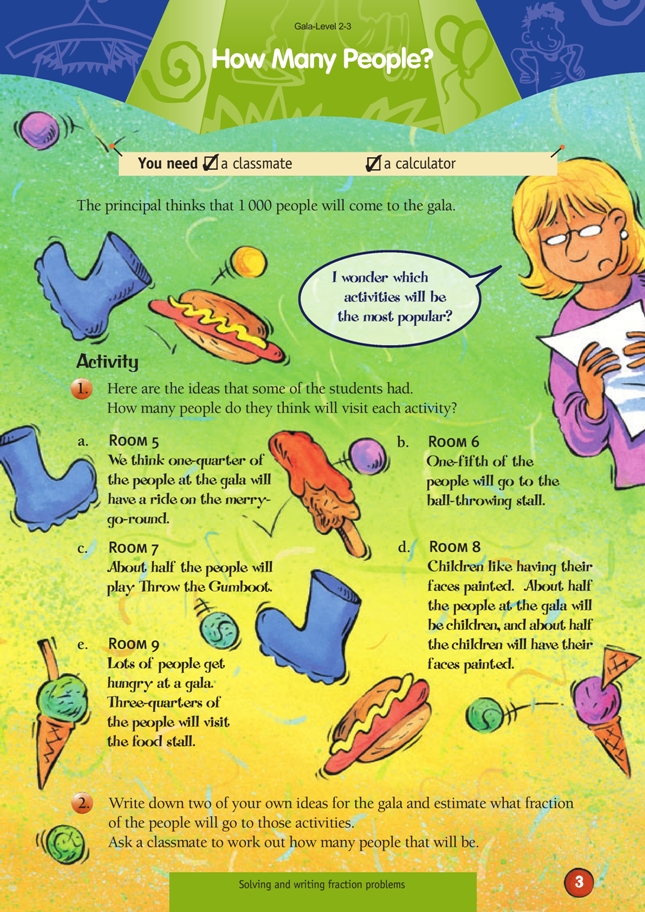This is a level 2 number activity from the Figure It Out theme series.
A PDF of the student activity is included.
Click on the image to enlarge it. Click again to close. Download PDF (350 KB)
find fractions of whole numbers
A classmate
A calculator
Using fractions in this context will help the students to work out how to find fractions of larger whole numbers. Some students may have some difficulty visualising fractions of larger numbers such as 1 000. You could use a metre ruler or a number line and show the students halves, quarters, fifths, and so on. You could record your findings in a table:
Discussing concrete examples such as: 1/2 of a pack of cards, 1/4 of a packet of Pebbles, 1/2 of your height, 1/2 of a kilogram, and 3/4 of a packet of biscuits may also be useful.
Point out to the students the connections between fractions and division and multiplication so that they are able to see how to calculate the answers. For example:
• 1/2 of 20 is 20 divided by 2
• 2/3 of 21 is 21 divided by 3 and that answer is multiplied by 2.
The students will learn to use a calculator to find the fractional part of a larger number like 1 000. For example, 3/4 of 1 000 is 1 000 divided by 4 and then that answer is multiplied by 3.
You could also explain that 2/3 means 2 ÷ 3. The students need to understand that the line separating the numerator and the denominator of a fraction is the division operator. If the students grasp this at an early stage, many of their problems in later algebra will be solved. You could then discuss the following examples:
• 12/3 is the same as 12 ÷ 3 = 4
• 100/4 is the same as 100 ÷ 4 = 25
• 20/4 of 100 is the same as 100 divided by 4 and that answer is multiplied by 20
or 20/4 of 100 is 20 ÷ 4 and that answer is multiplied by 100.
In question 2, encourage the students to use mental reasoning by explaining how they worked their classmate’s problem out and why they know their answer is right.
The students also deal with fractions of sets in question 2, Activity Two, page 18.
Page 20 of Number, Figure It Out, Levels 2–3, deals with finding fractions of two-digit numbers. This page and its teachers’ notes could tie in well with How Many People?
Answers to Activity
1. a. 250
b. 200
c. 500
d. 250
e. 750
2. Answers will vary.

